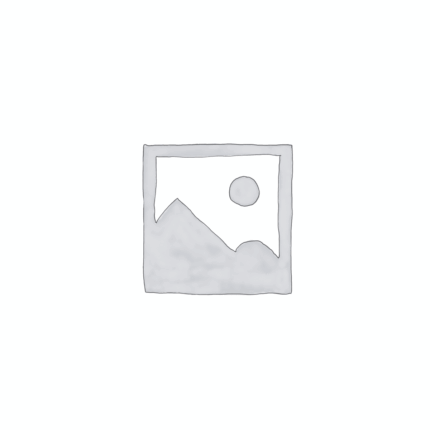Acid black 2 Powder
Whatsapp Order
Acid Black 2 powder, also known as Nigrosine, is a black, water-soluble dye available in powder form. It belongs to the acid dye class and is widely used for dyeing wool, silk, nylon, leather, and in some ink and polish formulations. It produces deep black shades with good color intensity under acidic conditions.
Description
Acid black 2 Powder Uses
Primary Uses
- Textile Dyeing
- Wool & Silk: Acid Black 2 is extensively used for dyeing protein-based fibers like wool, silk, and cashmere due to its strong affinity for these materials.
- Nylon & Synthetic Fibers: Also effective on polyamide (nylon) fabrics, providing deep, wash-fast black shades.
- Leather Industry: Used in leather dyeing for shoes, bags, and upholstery.
- Ink & Printing Industry
- Used in inks for ballpoint pens, stamp pads, and inkjet printing.
- Provides permanent, fade-resistant black coloration in specialty inks.
- Biological & Laboratory Staining
- Sometimes used in microscopy for staining biological specimens.
- Helps in histology for tissue contrast enhancement.
Secondary Uses
- Paper & Packaging Industry
- Used in colored paper production and security printing (e.g., banknotes, certificates).
- Cosmetics (Limited Use)
- Found in temporary hair dyes and cosmetic pigments (regulated for safety).
- Art & Craft Supplies
- Used in fabric paints, markers, and artist’s dyes for textiles.
- Wood Staining
- Occasionally applied in furniture and woodworking for dark finish
Additional information
| CONCENTRATION |
100% |
|---|---|
| AVAILABLE TEXTURES |
Powdery – Fine, dry particles (e.g., baking soda, powdered detergents). |
KEY ATTRIBUTES
1. Basic Identification Attributes
- Chemical Name (IUPAC):
Disodium 4-amino-5-hydroxy-3-[(4-nitrophenyl)azo]-6-(phenylazo)naphthalene-2,7-disulfonate - Common/Trade Names:
- Acid Black 2
- C.I. 50420
- Naphthalene Black 12B
- Eriochrome Black T (similar but distinct)
- CAS Number: [8005-03-6]
- HS Code: 3204.12.00 (acid dyes)
- Molecular Formula: C₂₂H₁₄N₆Na₂O₉S₂
- Molecular Weight: 616.5 g/mol
- Synonyms:
- Acid Black BN
- Lissamine Black 12B
- Wool Black 6BN
2. Physical & Chemical Properties
- Physical State: Fine powder
- Color: Dark bluish-black
- Odor: Odorless
- Melting Point: Decomposes before melting (~300°C)
- Boiling Point: Not applicable (decomposes)
- Density: ~1.5 g/cm³ (bulk density)
- Solubility:
- Water: 50 g/L (20°C)
- Ethanol: Slightly soluble
- Organic solvents: Insoluble
- pH Level: 5-7 (1% solution)
- Vapor Pressure: Negligible
- Flash Point: >200°C (non-flammable)
- Optical Properties: λmax = 570-620 nm (varies with pH)
3. Safety & Hazard Attributes
- Hazard Class (GHS):
- Acute Toxicity (Oral): Category 4 (H302)
- Skin Irritation: Category 2 (H315)
- Eye Irritation: Category 2A (H319)
- NFPA Ratings:
- Health: 2
- Flammability: 1
- Reactivity: 0
- Exposure Limits:
- OSHA PEL: Not established
- ACGIH TLV: Not established
- Reactivity:
- Stable under normal conditions
- Incompatible with strong oxidizers
4. Storage & Handling Attributes
- Storage Conditions:
- Cool, dry place (<30°C)
- Relative humidity <60%
- Away from direct sunlight
- Incompatible Materials:
- Strong oxidizers (peroxides, chlorates)
- Strong acids/bases
- Container Type:
- Sealed polyethylene or polypropylene containers
- Avoid metal containers
- Shelf Life: 24 months minimum
- Special Handling:
- Dust mask (NIOSH N95)
- Chemical-resistant gloves (nitrile)
- Eye protection (goggles)
5. Regulatory & Compliance Attributes
- Regulatory Status:
- EU: Compliant with REACH Annex XVII
- US: EPA TSCA listed
- China: IECSC listed
- Hazard Symbols (GHS):
- Exclamation mark (irritant)
- Not classified as carcinogenic
- Transportation Restrictions:
- Not regulated as dangerous goods
- Proper shipping name: "DYES, SOLID, N.O.S."
- Waste Disposal:
- Incineration at approved facilities
- Not RCRA hazardous (US)
6. Environmental & Health Impact
- Ecotoxicity:
- LC50 (fish): >100 mg/L (96h)
- EC50 (daphnia): >10 mg/L (48h)
- Persistence:
- Moderately biodegradable
- BOD5/COD: 0.1-0.3
- Carcinogenicity:
- IARC: Not classified
- NTP: Not listed
- Biodegradability:
- 30-60% in 28 days (OECD 301B)
SAFETY HANDLING PRECAUTIONS
1. Safety Precautions
Personal Protective Equipment (PPE):
- Gloves: Nitrile or neoprene gloves
- Eye Protection: Chemical splash goggles
- Respiratory Protection: NIOSH-approved N95 mask or higher (for dust)
- Clothing: Lab coat or protective apron
Handling & Storage:
- Handle in a well-ventilated area or under a fume hood
- Avoid creating dust (use wet methods if possible)
- Keep away from oxidizers, strong acids, and bases
- Store in a cool, dry place in a tightly sealed container
- Label containers clearly
Hygiene Practices:
- Do not eat, drink, or smoke while handling
- Wash hands thoroughly after use
- Avoid inhalation of dust
2. First Aid Measures
Inhalation (Dust):
- Move to fresh air immediately
- If breathing is difficult, seek medical attention
Skin Contact:
- Remove contaminated clothing
- Wash affected area with soap and water for at least 15 minutes
- Seek medical attention if irritation persists
Eye Contact:
- Rinse eyes with plenty of water for at least 15 minutes (hold eyelids open)
- Seek immediate medical attention
Ingestion:
- Do NOT induce vomiting
- Rinse mouth with water
- Drink water to dilute
- Seek emergency medical help
3. Firefighting Measures
Fire Hazards:
- Not highly flammable, but may decompose at high temperatures
- May emit toxic fumes (NOx, CO, CO₂) when burning
Extinguishing Media:
- Water spray
- Dry chemical powder
- CO₂
- Foam
Firefighting Precautions:
- Wear self-contained breathing apparatus (SCBA)
- Cool containers exposed to fire with water spray
- Avoid breathing smoke/fumes
4. Spill & Disposal
Small Spills:
- Wear PPE
- Dampen with water to reduce dust
- Sweep up and place in a sealed container
Large Spills:
- Evacuate area
- Contain spill to prevent spread
- Collect for proper disposal
Disposal:
- Treat as hazardous waste
- Follow local regulations for dye disposal
Related products
Acetic Acid Technical Grade
Acetic acid technical grade is a clear, corrosive liquid with a strong, sharp odor. It is primarily used in industrial and chemical applications rather than food or pharmaceutical products. With the chemical formula CH₃COOH, technical-grade acetic acid typically has a purity of around 99%, but it may contain small amounts of impurities that make it unsuitable for consumption or high-purity applications.
Acid Black 210
Acid Black 210 is a water-soluble acid dye known for its deep black shade and strong colorfastness. It appears as a fine black powder and is commonly used in the textile and leather industries for dyeing wool, silk, nylon, and chrome-tanned leather. It offers good light, wash, and rubbing fastness, making it suitable for high-performance applications.
Ammonium Cupric Chloride
Ammonium Cupric Chloride is a blue-green crystalline inorganic compound composed of copper, ammonium, and chloride ions. It is widely used as a source of copper in agricultural fungicides and bactericides, as well as in electroplating, chemical synthesis, and textile dyeing. Its antimicrobial properties make it valuable for controlling fungal and bacterial infections in plants. Additionally, it serves as a precursor in various industrial and laboratory applications.
Basic Chrome
Basic Chrome Sulfate, commonly referred to as Basic Chrome, is a chromium-based chemical compound primarily used in the leather tanning industry. It appears as a greenish crystalline powder and contains chromium(III) sulfate complexed with basic chromium salts. Basic Chrome is favored for its ability to produce soft, flexible, and durable leather by crosslinking collagen fibers. It is the most widely used tanning agent worldwide due to its effectiveness and cost-efficiency. Besides tanning, Basic Chrome finds applications in other industries like pigments and catalysts.
Bating agent
Bating Agent is a biochemical preparation used primarily in the leather processing industry during the bating stage, which follows liming and deliming. It consists mainly of proteolytic enzymes (such as pancreatin, trypsin, or subtilisin) that break down non-collagenous proteins, hair residues, and unwanted tissue from hides and skins. This enzymatic treatment softens the leather, improves its texture and pliability, and prepares it for tanning. The bating process enhances the quality, uniformity, and appearance of the final leather product


 Pesticides (Herbicides, Insecticides, Fungicides)
Pesticides (Herbicides, Insecticides, Fungicides) Animal Feed Additives
Animal Feed Additives Biostimulants
Biostimulants Plant Growth Regulators
Plant Growth Regulators Fertilizers
Fertilizers Soil Conditioners
Soil Conditioners
 Decoratives
Decoratives Dough Conditioners
Dough Conditioners Fat Replacers
Fat Replacers Flour Treatments
Flour Treatments Leavening Agents
Leavening Agents Preservatives(baking)
Preservatives(baking)
 Bleaching Agents
Bleaching Agents Builders
Builders Enzymes
Enzymes Fragrances
Fragrances Surfactants(cleaning)
Surfactants(cleaning) Solvents (cleaning)
Solvents (cleaning)
 Admixtures
Admixtures Anti-Corrosion Coatings
Anti-Corrosion Coatings Concrete Repair Chemicals
Concrete Repair Chemicals Curing Compounds
Curing Compounds Sealants and Adhesives
Sealants and Adhesives Waterproofing Agents
Waterproofing Agents
 Antioxidants(cosmetic)
Antioxidants(cosmetic) Emollients
Emollients Fragrances and Essential Oils
Fragrances and Essential Oils Humectants
Humectants Surfactants(cosmetic)
Surfactants(cosmetic) Thickeners
Thickeners UV Filters
UV Filters Preservatives (cosmetic)
Preservatives (cosmetic)
 Bio-based Solvents
Bio-based Solvents Biodegradable Surfactants
Biodegradable Surfactants Carbon Capture Chemicals
Carbon Capture Chemicals Renewable Polymers
Renewable Polymers Wastewater Treatment Chemicals
Wastewater Treatment Chemicals
 Acidulants
Acidulants Antioxidants
Antioxidants Colorants(food)
Colorants(food) Emulsifiers
Emulsifiers Flavor Enhancers
Flavor Enhancers Nutraceutical Ingredients (food)
Nutraceutical Ingredients (food) Nutrient Supplements
Nutrient Supplements Preservatives(food)
Preservatives(food) Sweeteners
Sweeteners
 Dried Herbs
Dried Herbs Fresh Herbs
Fresh Herbs Ground Spices
Ground Spices Spice Blends
Spice Blends Whole Spices
Whole Spices
 Analytical Reagents
Analytical Reagents Biochemical Reagents
Biochemical Reagents Chromatography Chemicals
Chromatography Chemicals Inorganic and Organic Standards
Inorganic and Organic Standards Laboratory Safety Chemicals
Laboratory Safety Chemicals Microbiology and Cell Culture Reagents
Microbiology and Cell Culture Reagents Molecular Biology Reagents
Molecular Biology Reagents Solvents(lab)
Solvents(lab) Specialty Laboratory Chemicals
Specialty Laboratory Chemicals Spectroscopy Reagents
Spectroscopy Reagents
 Collectors
Collectors Dust Suppressants
Dust Suppressants Explosives and Blasting Agents
Explosives and Blasting Agents Flocculants and Coagulants
Flocculants and Coagulants Frothers
Frothers Leaching Agents
Leaching Agents PH Modifiers
PH Modifiers Precious Metal Extraction Agents
Precious Metal Extraction Agents
 Catalysts
Catalysts Corrosion Inhibitors
Corrosion Inhibitors Demulsifiers
Demulsifiers Drilling Fluids
Drilling Fluids Hydraulic Fracturing Fluids
Hydraulic Fracturing Fluids Scale Inhibitors(oil)
Scale Inhibitors(oil) Surfactants(oil)
Surfactants(oil)
 Active Pharmaceutical Ingredients (APIs)
Active Pharmaceutical Ingredients (APIs) Analgesics and Antipyretics
Analgesics and Antipyretics Antibiotics
Antibiotics Antiseptics and Disinfectants
Antiseptics and Disinfectants Excipients
Excipients Nutraceutical Ingredients (Pharmaceutical)
Nutraceutical Ingredients (Pharmaceutical) Solvents(pharmaceutical)
Solvents(pharmaceutical) Vaccine Adjuvants
Vaccine Adjuvants
 Antioxidants(plastic)
Antioxidants(plastic) Colorants (Pigments, Dyes)
Colorants (Pigments, Dyes) Fillers and Reinforcements
Fillers and Reinforcements Flame Retardants
Flame Retardants Monomers
Monomers Plasticizers
Plasticizers Polymerization Initiators
Polymerization Initiators Stabilizers (UV, Heat)
Stabilizers (UV, Heat)
 Accelerators and Retarders
Accelerators and Retarders Adhesion Promoters
Adhesion Promoters Antidegradants (Antioxidants, Antiozonants)
Antidegradants (Antioxidants, Antiozonants) Blowing Agents (for foam rubber)
Blowing Agents (for foam rubber) Plasticizers and Softeners
Plasticizers and Softeners Reinforcing Agents (Carbon Black, Silica)
Reinforcing Agents (Carbon Black, Silica) Vulcanizing Agents (e.g., Sulfur, Peroxides)
Vulcanizing Agents (e.g., Sulfur, Peroxides)
 Analytical Reagents
Analytical Reagents Automotive chemicals
Automotive chemicals Electronic Chemicals
Electronic Chemicals Lubricants
Lubricants Photographic Chemicals
Photographic Chemicals Pyrotechnic Chemicals
Pyrotechnic Chemicals Refrigerants
Refrigerants Sealants and Adhesives
Sealants and Adhesives
 Antistatic Agents
Antistatic Agents Bleaching Agents
Bleaching Agents Dyes and Pigments
Dyes and Pigments Finishing Agents
Finishing Agents Flame Retardants
Flame Retardants Softening Agents
Softening Agents
 Antifoaming Agents
Antifoaming Agents Chelating Agents
Chelating Agents Coagulants and Flocculants
Coagulants and Flocculants Corrosion Inhibitors
Corrosion Inhibitors Disinfectants and Biocides
Disinfectants and Biocides Oxidizing Agents
Oxidizing Agents pH Adjusters (water)
pH Adjusters (water) Scale Inhibitors( water)
Scale Inhibitors( water)















